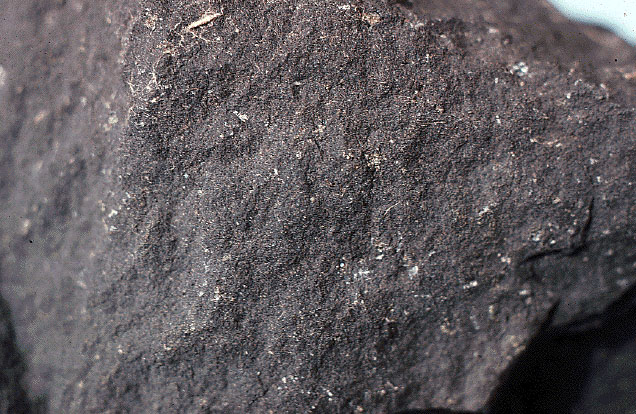
This is a close-up photograph of an aphanitic, or fine-grained
basalt. Note the lack of any very well-defined
crystals.
That's because it cooled very quickly and crystals didn't have a chance
to form. About the only crystals you may see in this basalt
are lath-shaped (rectangular) plagioclase that are whitish. |
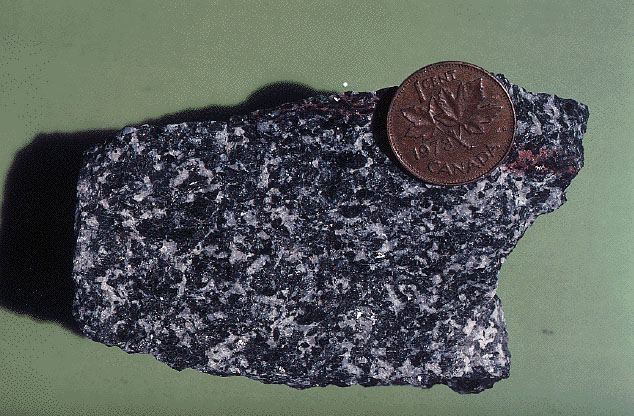
A close-up of a medium-grained gabbro.
Compositionally
the gabbro is the same as the aphanitic basalt, but it
took
a longer time to cool - hence the better developed crystals. The
crystals in the gabbro are the light-colored plagioclase and
the
dark-colored olivine and pyroxene. |
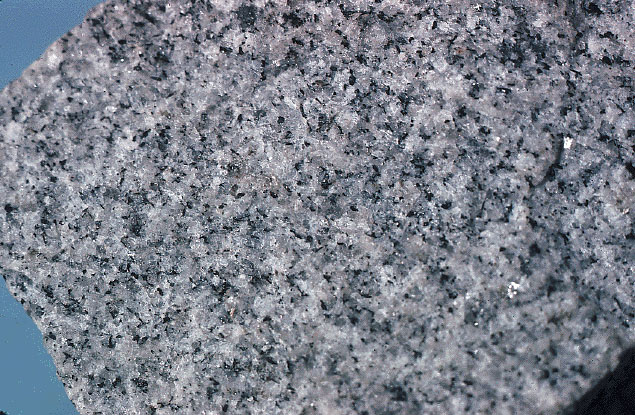
Close-up view of a fine-grained granite. Note the lack
of large crystals. Since the crystals are small, this granite
probably cooled relatively quickly before they had a chance to
grow.
One possible location might be near the edge of the magma chamber,
close to cool country rocks. |
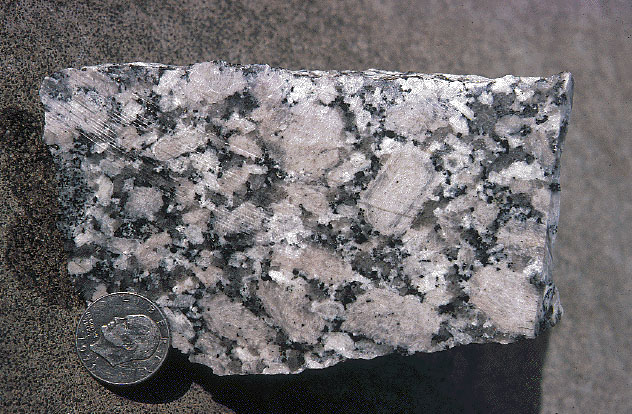
Again, this is a granite, however, this time it is coarse-grained
indicating that the crystals had a much longer time to
crystallize.
This rock may have formed further towards the center of the magma
chamber
where it was warmer and more insulated for a longer
time. Also
not the zoned plagioclase feldspar crystals, they're the
pinkish
crystals. The smoky, or gray, crystals are quartz, and
the
black crystals are biotite. |
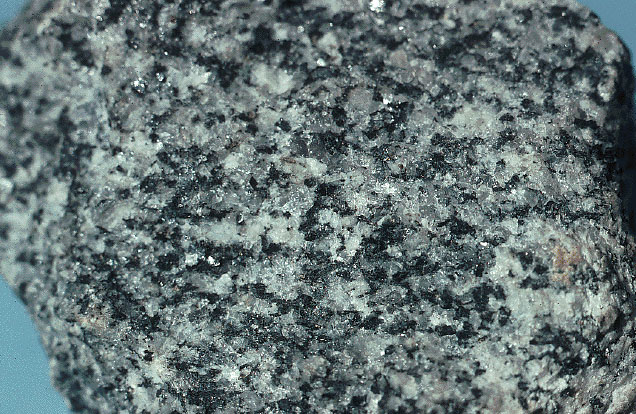
This is a medium-grained granite. The size of the
crystals
indicates that it took longer to cool than the fine-grained granite
above,
but shorter to cool than the coarse-grained granite above and
to
the right. The minerals found in this are the same as the other
granites. |
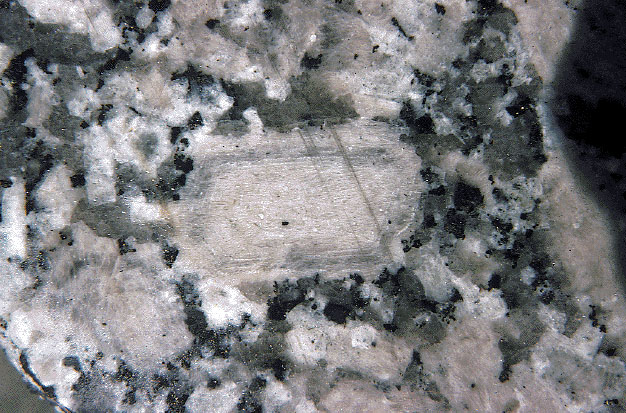
This is an extreme close-up of one of the zoned plagioclase feldspar
crystals seen in the coarse-grained granite above. Note
the
rings around the center of the plagioclase crystals. Like rings
found
in trees, these rings are placed on the outside edge of the crystal as
it grows. The rings indicate that the magma, or melt, was
slowly changing its composition, and hence color, as the rest of the
crystals
formed. This is very common in crystals that took a long time to
form. |

If the magma forming an igneous rocks fragments, or cools
quickly
and explosively, it may produce pumice, a
pyroclastic
rock. Pumice is very porous and will sometimes
float on
water. Here we can see a very thick layer of pumice. |

If a magma cools extremely rapidly, quenched, then it may form an obsidian.
Not all obsidian is black. Colors range from black to
brown,
to red, to green to blue and yellow. This particular obsidian is
called mahogany obsidian because of its color. Obsidian also
exhibits
conchoidal fracture which is the smooth, curved surfaces
seen here
and also found in quartz. |
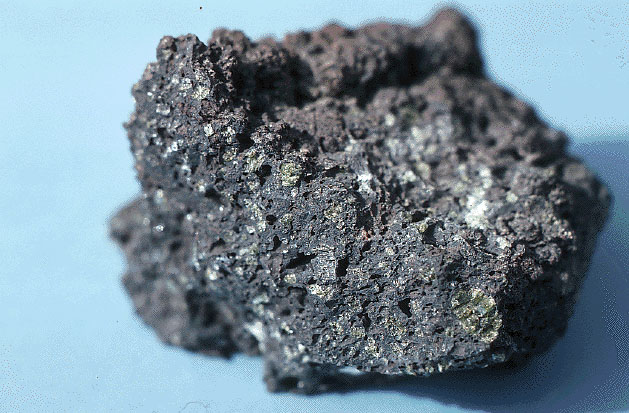
If the lava or magma has some vesicles, or gas
bubbles, in it, but is not as lightweight as pumice and does
not
float in water, then we call the rock scoria. It is
generally
darker than pumice and may have a few small crystals of olivine
or plagioclase visible. |
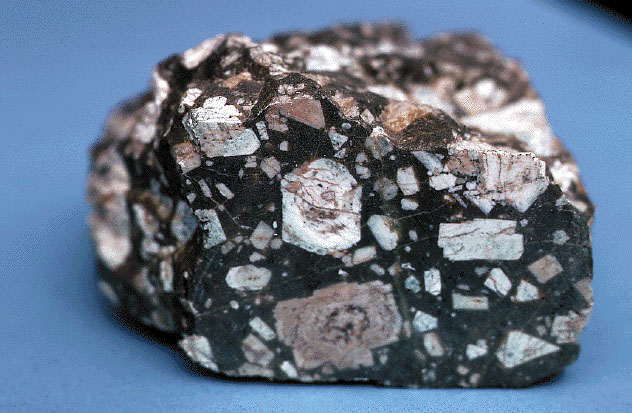
An extrusive rock that is compositionally the same as granite
is a rhyolite. Since it is extrusive it implies
that
it cools very quickly and we would not normally see crystals.
This
particular example is a rhyolite in which the magma
started
to cool slowly, and crystals started to form. It was then erupted
and quenched - stopping crystal growth. This texture of both
large
crystals (phenocrysts) and small crystals, or none, in a fine-grained
matrix (groundmass) is called porphyritic.
Therefore
this would be a porphyritic rhyolite. Note the zoned
plagioclase. |
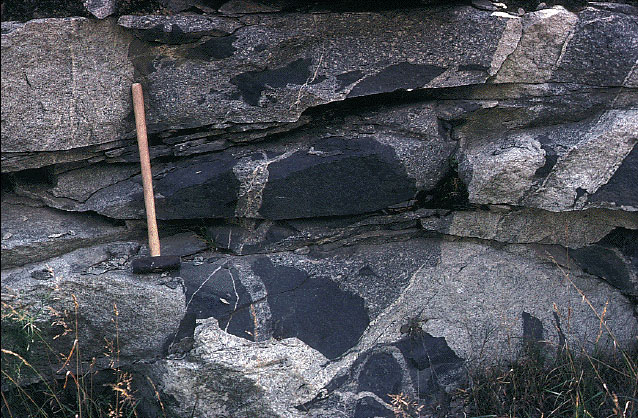
Sometimes when an igneous rock intrudes the surrounding country
rocks it does so in a brittle manner. That is, it doesn't
just
flow into cracks and joints that it makes. Here we see dark country
rock (older basalt) that has been torn apart as the granite
was intruded. The broken basalt fragments are called xenoliths.
Xenoliths allow us to use the Principle of Inclusion
to tell
in a relative sense which rock is older - here the basalt is
older
than the granite. |
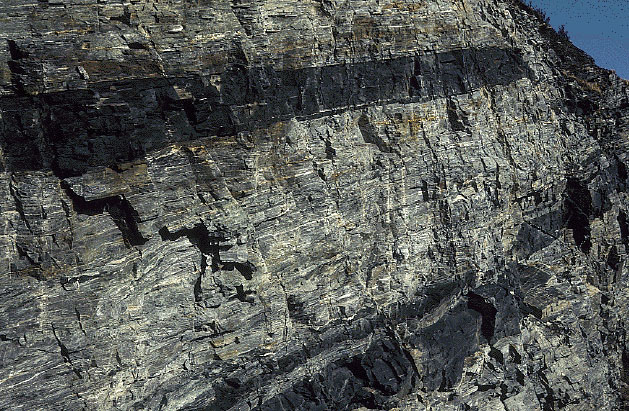
If an intrusive igneous rock does not cut across the
surrounding
rock's fabric, or bedding, then we call that a concordant intrusion,
or a sill. |
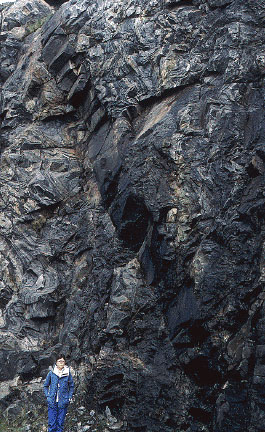 An
intrusive igneous rock that cuts across, or is discordant
to, the surrounding rock's fabric (bedding) is called a dike.
Here we see a 1 meter thick basalt dike. An
intrusive igneous rock that cuts across, or is discordant
to, the surrounding rock's fabric (bedding) is called a dike.
Here we see a 1 meter thick basalt dike. |
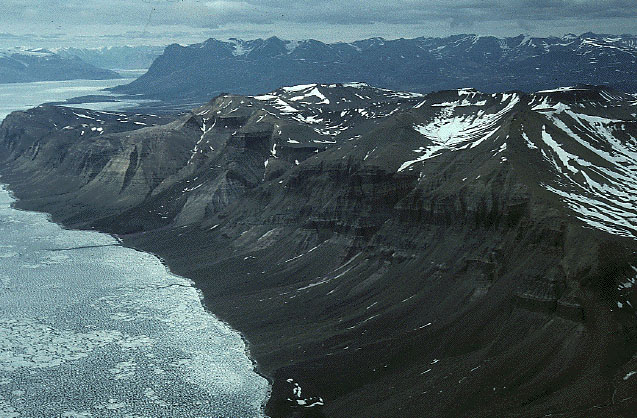
These are igneous sills that have been faulted. Not the
upper most land surface continues uninterrupted, whereas the igneous sills
have been offset along a fault. We will talk about what type of
fault
this is in later chapters. |